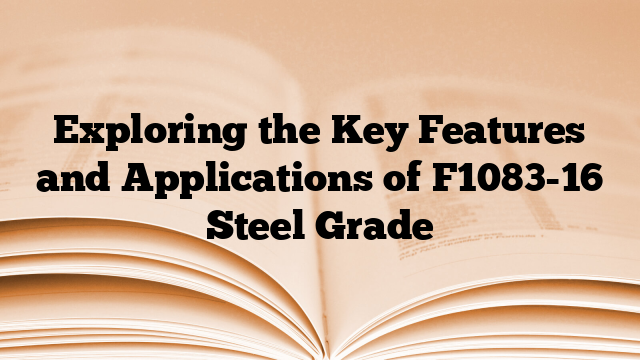The chemical composition of F1083-16 steel grade consists of carbon, manganese, phosphorus, sulfur, copper, and nickel. The carbon content provides strength and hardness to the steel, while manganese enhances its hardenability and tensile strength. Phosphorus and sulfur improve machinability, while copper improves corrosion resistance. Nickel is added for increased strength and toughness.
The mechanical properties of F1083-16 steel grade are essential for understanding its performance in various applications. It has a minimum yield strength of 30,000 psi (205 MPa) and a minimum tensile strength of 48,000 psi (330 MPa). The steel has excellent weldability and formability, allowing for easy fabrication and construction.
F1083-16 steel grade is commonly used in the manufacturing of pipes and tubes for fence structures and other outdoor applications. Its corrosion-resistant properties make it suitable for outdoor environments, including high humidity and saltwater exposure. The steel’s high strength and durability ensure long-lasting performance, even under challenging conditions.
The standard number for F1083-16 steel grade refers to the specific edition of the ASTM F1083 standard that the steel grade complies with. This standard outlines the requirements for zinc-coated welded steel pipe suitable for fence structures. The F1083-16 standard includes specifications for material properties, dimensions, tolerances, and testing methods to ensure quality and consistency.
Corresponding to the F1083-16 steel grade are various applications and uses. The most common application is in fence structures, including commercial, industrial, and residential fencing. The steel grade is also used in agricultural applications, such as livestock enclosures and field fences. Other potential uses include guardrails, handrails, and outdoor furniture.
Overall, F1083-16 steel grade offers excellent strength, corrosion resistance, and weldability, making it a versatile choice for a range of outdoor applications. Its chemical composition and mechanical properties meet the required standards, ensuring quality and performance in various structural and fencing projects.

